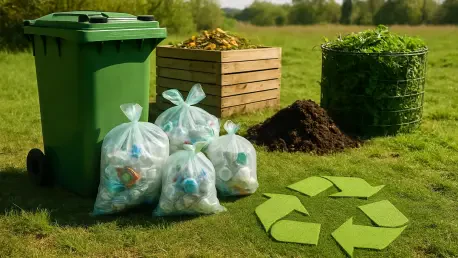I’m thrilled to sit down with Christopher Hailstone, a renowned expert in energy management and utilities, whose deep knowledge of renewable energy and grid reliability offers a unique perspective on environmental services and waste management. Today, we’ll dive into the latest performance of a leading waste management company, exploring their financial achievements, operational strengths, challenges in specialized segments, and critical decisions around facility operations. We’ll also touch on their innovative strides in sustainability and future growth potential.
How would you describe the standout achievements in the waste management sector recently, particularly regarding revenue growth and operational efficiency?
Well, I think the recent performance of companies like WM showcases some remarkable achievements. Their revenue jumped by nearly 15% year over year to $6.44 billion in the third quarter, which is a clear indicator of strong market demand and effective business strategies. A big part of this success comes from operational efficiencies, such as technology-driven cost reductions and fleet automation. These advancements have not only expanded margins but also set a solid foundation for sustained growth, even in a competitive industry.
What do you believe contributed to the significant drop in net income despite such strong revenue gains?
That’s a critical point. Even with a revenue increase, WM saw a 20.7% drop in net income to $603 million. This largely stems from headwinds in specific segments, like Healthcare Solutions, where integration challenges and customer-facing issues have piled up costs. Additionally, declining commodity prices, especially in recycled materials, have squeezed profitability. It’s a reminder that revenue growth doesn’t always translate directly to the bottom line when operational or market challenges persist.
Can you elaborate on the role of the collection and disposal business in driving overall growth for companies in this space?
Absolutely. The collection and disposal segment is often the backbone of waste management firms, and for WM, it’s been described as the engine of growth. It contributed over half of the year-over-year increase in operating earnings. Key drivers include a 5.2% rise in landfill volumes across municipal solid waste, special waste, and construction categories. This isn’t just about volume—it’s about strategic pricing, with a core price increase of 6%, and capturing new opportunities like event-driven waste projects that boost overall performance.
Shifting to challenges, what’s your take on the integration struggles within the Healthcare Solutions segment and their impact on performance?
The Healthcare Solutions segment, despite generating $628 million in revenue, has been a pain point due to integration issues following acquisitions like Stericycle and the rollout of new ERP systems. These technical hiccups have led to billing and reporting frustrations for customers, prompting WM to offer credits or delay price increases. It’s a short-term hit to revenue and customer trust, but it also highlights the complexities of merging large-scale operations in a specialized sector like healthcare waste management.
How are companies addressing customer frustrations in specialized segments like healthcare waste, and what’s working well there?
From what I’ve observed, companies are taking proactive steps by directly addressing customer pain points—offering financial concessions like credits and focusing on transparent communication to rebuild trust. On the positive side, WM has secured about $200 million in service renewals in this segment, which shows that their core offerings still resonate with clients. The focus now is on streamlining systems and leveraging these successes to ensure long-term customer loyalty while ironing out the operational kinks.
Regarding sustainability efforts, can you explain the reasoning behind closing facilities like the Natura PCR plastic film processing plant and the market conditions at play?
The closure of the Natura PCR facility in Texas is a tough but pragmatic decision driven by unfavorable market dynamics. Low prices for virgin plastic, combined with delays in legislation mandating recycled content, have made it hard to find buyers for high-quality recycled pellets. As the Chief Sustainability Officer noted, the market just isn’t ready to pay a premium for post-consumer recycled materials. It’s a stark example of how external economic and regulatory factors can derail even well-intentioned sustainability initiatives.
Looking at the broader picture of sustainability, how do you see innovations like renewable natural gas projects shaping the future of waste management?
Renewable natural gas (RNG) is a game-changer for the industry. WM, for instance, has doubled RNG production in the first nine months of the year and is strategically planning to allocate it to fleet applications by 2026. They’ve also pre-sold a significant portion of their 2026 offtake, showing strong market confidence. RNG not only reduces reliance on fossil fuels but also creates new revenue streams through RIN sales, despite some timing fluctuations in earnings. It’s a clear path toward aligning environmental goals with financial viability.
What’s your forecast for the waste management industry, especially in balancing profitability with sustainability goals over the next few years?
I’m cautiously optimistic about the industry’s trajectory. Companies like WM are well-positioned to balance profitability with sustainability through investments in automation, RNG, and recycling infrastructure. However, challenges like volatile commodity prices and regulatory delays will continue to test their adaptability. Over the next few years, I expect a stronger push toward circular economy models, with greater collaboration between businesses and policymakers to enforce recycled content laws and stabilize markets. If executed well, this could redefine the industry as both a profit driver and an environmental leader.









